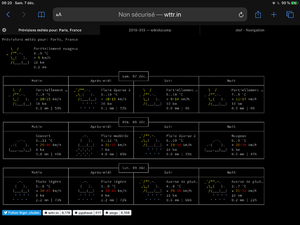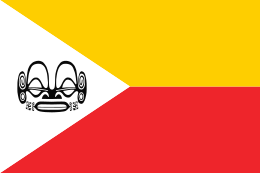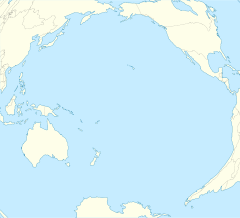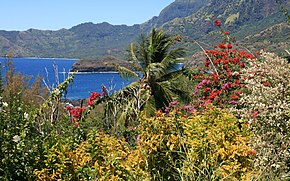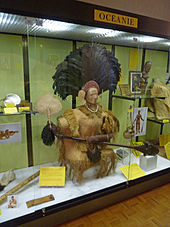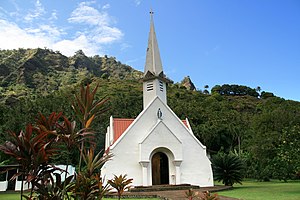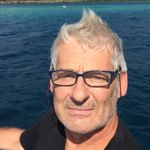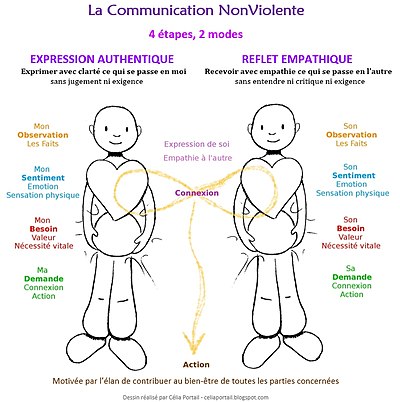Accueil
De Mi caja de notas
Révision datée du 7 décembre 2019 à 05:38 par Xtof (discussion | contributions)
« Tout est mystère dans l'Amour,
Ses flèches, son carquois, son flambeau, son enfance. Ce n'est pas l'ouvrage d'un jour
Que d'épuiser cette science. »
— Jean de la Fontaine, Fables, "L'Amour et la Folie"

|
segments
7 traits

💁♀️ Tech
Gluon[1], une app Micro.blog pour Android — est désormais en public beta dans Google Play. (Via @manton) https://www.manton.org/2019/12/06/gluon-a-microblog.html
--> ⏰ Fenêtre et Chercher la 🌙
Position GPS, Vitesse, 👂, réglages voiles, niveaux de batterie 🥁, vision périphérique
-->
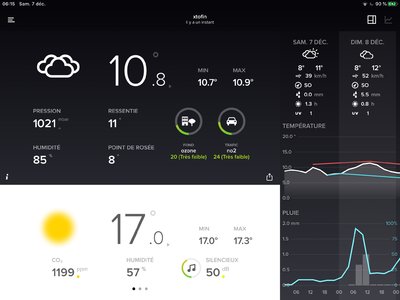
Mesure CO2 > 1000 - aération 5 minutes.
52.02
usages xtof
- météo pour navigation ⛵️ et vol libre (permis hauturier et révision PPL)
- Protocoles de communication (prise de rdv : service de météo intégré dans le manuel de l’utilisateur.)
Cet article est une débauche. Vous pouvez m’aider à l'améliorer.
- L'accueil est une cérémonie réservée à un nouvel arrivant, consistant généralement à lui souhaiter la bienvenue et à faciliter son intégration.
- Dans le monde du travail, l'accueil consiste à orienter un patient, un client ou un visiteur et à l'aider dans ses démarches. Le passage à l'accueil (qui peut être le secrétariat ou la réception) est parfois obligatoire afin de contrôler l'identité d'une personne extérieure ou de la diriger vers les seuls lieux qui lui sont autorisés. L'accueil peut désigner le service chargé de ces prestations, le lieu où ce service travaille.
- En art, l'accueil fait référence à la manière dont une œuvre a été acceptée lors de sa sortie par le public et les critiques.
- Accueil collectif de mineurs, en langage administratif français, un camp de vacances pour jeunes
- Accueil et traitement des urgences, en langage administratif français, le service d'urgence médicale
- Accueil familial, en langage administratif français, un mode de prise en charge des personnes rencontrant des difficultés passagères ou permanentes — adultes handicapés, personnes âgées, malades, convalescents
- Accueil familial de vacances, une action dépendant du Secours catholique français
- Accueil paysan, une association française constituée de paysans et d'acteurs ruraux qui pratiquent l'accueil en chambre d'hôtes, en gîte, en camping à la ferme, etc.
- Accueil périscolaire, en France, un service proposé aux familles en lien à l'école, et qui a pour but notamment l'aide aux devoirs, ou la garderie des enfants dont les parents travaillent tard
- Écran d'accueil, en informatique, l'affichage principal de certains systèmes d'exploitation, et une page d'accueil la page principale d'un site web
- Tous les articles commençant par « Accueil »
- Hospitalité
- Page d'accueil
<footer>source wp:Accueil</footer>
Contact
Christophe Ducamp - 62 yrs
(Wanna be a sailor)
Grandfather, 3 children. Yachtmaster Coastal (RYA[2]).
- e-mail : christophe
 ducamp.me
ducamp.me - web : https://christopheducamp.com
- SMS +336 32 03 97 96 😘
2023
November 🇪🇸
🇪🇸 Delivery from Malaga to Tenerife (Moana - Marten 49 - 650 NM)
July - August 🇵🇹 🇮🇹
🇵🇹 Delivery from Porto to Santa Maria Island (Azores) via Madeira (Tethys - Moody - 600 NM)
🇮🇹 Delivery from Palerme (Sicily) - to Canet-en-Roussillon - (Cleo - X402 - 850 NM)
June - delivery Kiel 🇩🇪 > Göteborg 🇸🇪
IMX 45. Captain Vincent Dagault.
2022
Sept-Oct - Prep YachtMaster Offshore[3] Saint-Malo 🇫🇷
Lady Kalinka. Captain Nicolas Joubert - Saint-Malo > Guernsey > Sark > Cherbourg > Portsmouth > Roscoff
August - Prep YachtMaster Offshore[4] Saint-Malo 🇫🇷
Lady Kalinka. Captain Nicolas Joubert - Saint-Malo > Falmouth > Newlyn > Scilly Islands
June - Prep YachtMaster Offshore[5] Saint-Malo 🇫🇷
Lady Kalinka (Feeling 43). Captain Nicolas Joubert- Tide Gaming zone : North Brittany Anglos - Learning CPS Passage Planning : Guernsey, Sark & Chausey islands.
March-April - Transatlantic La Rochelle - Bermuda 🇧🇲
Neel 43 (trimaran). Delivery from La Rochelle to Bermuda 🇧🇲 via Canary Islands 2nd mate. Captain 🧑✈️ Pavol Cizmar (Reliance Yacht Management)
2021
Dec - La Rochelle - Zeebruges 🇧🇪
Fountain Pajot - Delivery w 🧑✈️ Thierry Rougier + Jeremy Richou (Reliance Yacht Management)
Sept-Oct - Göteborg 🇸🇪 - Leucade Greece 🇬🇷
Bénéteau 57 - 3300 MN 🧑✈️ Andreas Sekinger - Reliance Yacht Management.
August - Horta Açores 🇵🇹 - Arzal (Morbihan)
JFA 53 Suditude w Frank Foezon. 1 week training in Azores. Moorings- Delivery in Arzal for refit.
July Majorque 🇪🇸 -> Port Camargue delivery
POGO 30 Paraty w Stefano et Camille. Route via Barcelone & Roses
May 2021 Delivery - La Rochelle - UK 🇬🇧
420 MN La Rochelle - Southampton - Fountaine Pajot Astrea 42
Feb - March 2021 - Delivery Lagoon 42 Athenes (Greece) + Transat to St Marteen (Antilles)
SeaHawke w Pavol Cizmar (Reliance Yacht Management). 4500 MN Salamine(Greece) - Riposto (Italie) - Gibraltar - Canaries - Cap-Vert - Saint-Martin (Antilles françaises)
2020
Nov Dec 2020 - Transat - Amel 54 - Gibraltar - Martinique
On Antinea 3000 MN de Gibraltar - Canary Islands- Capo-Verde - Port du Marin (Martinique) 🇫🇷.
Aug Sept2020 - Catana Bali 41 from La Rochelle to 🇫🇷 Bodrum 🇹🇷
2500 MN pour convoyage de Marans à Bodrum
Mai-Juin 2020 - La Rochelle - Athènes - Toulon
3 convoyages durant le confinement
- La Rochelle - Athènes Lagoon 42
- Athènes - Olbia sur Bali 40
- Olbia - Toulon sur Sun Odyssey 50
2019
Déc 2019 - Almerimar -> Formentera 🇪🇸
Avec Patrick sur Cassou Morning Glory 36
Juillet 2019 - Convoyage Bretagne - Écosse
Saint Brieuc - Oban (Écosse) sur Canardo. Escales aux Îles Scilly et à Carlingford (Irlande).
Mai - Juin 2019 Transat retour Bahamas-Bermudes Açores
Avec Catherine et Alain sur Diboell (Owni) :
de Nassau (Bahamas) via les Bermudes jusqu'aux Açores (Faial / Horta)
Pâques 2019 - Caen et Iles Anglo-Normandes
Caen, Ouistreham, Ile de Wight, Cowes, Poole, Alderney, Cherbourg Excalibur sur Élan 43 (1, 2)
Caen, Parcours côtier vers le Havre sur un Beach Craft 49 pieds (De Groot design 3)
2018
Nov 2018 / janvier 2019 - Transat Aller sur Espalmador
Portimao - Canaries - Cap Vert - Port du Marin (Martinique) w Jonathan sur un Mangaréva Plan Caroff
Août 2018 - Cléo X402
800 mn Naples- Rome- Bonifacio- La Grande Motte
Août 2018 - Douarnenez / Liverpool
Souvenir d'une très belle tempête (60kts) en Mer d'Irlande
Juillet 2018 Cléo X402
1000 mn Mediterranée : Canet - Messine
2016
Octobre-novembre 2016
1400 miles nautiques sur Cleo X402 avec Patrick Debord > Christophe a fait partie de mon équipage lors de la première partie de ma transat de 2016, de Canet-en-Roussillon jusqu'à Arecife à Lanzarote, pour une navigation de plus de 1400 milles, sur mon vieil X 402. C'est un très bon équipier, ainsi qu'un personnage convivial et intéressant. Il a participé également à une semaine de navigation aux Baléares avec moi en août 2016. Patrick D. (photo équipage)
Août 2016
500 mn Croisière Canet-en-Roussillon - cabotage îles Baléares.1970 - 2000
- Moth Europ, 420, Formula 18 (Alado et Nacra)
- Class 8 & Figaro (La_Trinité-sur-Mer)
Various
- Languages : French (native), English (fluent) and learning Spanish
- PSC1 Elementary First Aid (2022-08)
- Soft skills : sociable, easy going and enthusiast. Learning Research works on accordance and flow[6]
Air
- Air : paragliding since 1990 (Prévol - St Hilaire du Touvet)
- Private Pilot License (PPL)
Download
Photoblog ⛵️
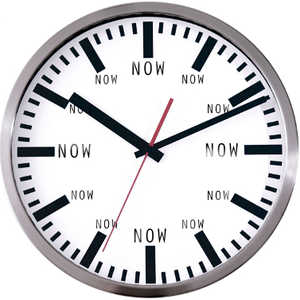
La syntaxe markdown n'est plus supportée depuis la mise à jour 1.33.[8]
réseau local
locol + offline web voir iwc:locol brainstorming > https://etherpad.indieweb.org/locol
notez tout sur le journal de bord
2. conditions
3. tracer la route
4. départ ok si
- zone et conditions adaptées
- route et route bis tracées
- arrivée de jour ... si possible
- équipage informé de 2 + 3 (conditions, tracer la route)
- contact à terre informer de 3 (Nuit = coucher de soleil +30 minutes)
indieweb est un titre de deuxième niveau
![]() le titre de premier niveau n'est jamais utilisé dans les articles puisqu'il s'agit du niveau utilisé pour le titre des articles.
le titre de premier niveau n'est jamais utilisé dans les articles puisqu'il s'agit du niveau utilisé pour le titre des articles.
Une liste :
- Un lien interne direct: Spécial:Modifications récentes
- italique
- gras
- gras et italique
barré- Et ça marche avec les apostrophes : l'automne sera pluvieux !
On numérote une liste ?
1. Pourquoi pas ? 1. Je veux bien ! 1. C'est facile... Par exemple : Ier siècle av. J.-C. ou encore XVIIe siècle
Troisième niveau : comment utiliser les indices
Du texte normal peut contenir un indice pour des notations.
Quatrième niveau de titre : et maintenant les exposants
Du texte normal peut contenir aussi un exposant.
Cinquième niveau de titre
Pour passer au paragraphe suivant, il faut laisser une ligne blanche. Ici, on est toujours dans le même paragraphe.
Et hop, voici le nouveau paragraphe !
Sixième (et dernier) niveau de titre
Normalement, ça doit suffire pour découper un article en détail.
Références
Une référence[10]
Et une autre[11] avec les notes tout en bas de la page. On peut même faire un lien pour un livre : ISBN 0-201-71499-X
Pour que les références apparaissent, pensez à ajouter ceci en bas de page :
== Notes et références == <references />
ce qui donne :
Notes et références
- ↑ Durant la bêta, l’app ne fonctionne que pour les microblogs hébergés chez Manton.
- ↑ https://www.rya.org.uk/training/certificates-of-competence/yachtmaster-coastal
- ↑ Sail-master-training
- ↑ Sail-master-training
- ↑ Sail-master-training
- ↑ social design w crews and people in flotillas.
- ↑ Roam Research : roam:j9YSaOXOt
- ↑ This Sandbox aka toilet seat has been cleaned on 2022-06-26.
- ↑ cf maps
- ↑ ceci est le bac à sable
- ↑ note en italique ou en gras
Et pour les tableaux...
| Le plus simple | est d'utiliser | l'éditeur wiki |
|---|---|---|
| cellule 1.1 | Texte de la cellule 1.2 | Texte de la cellule 1.3 |
| Texte de la cellule 2.1 | :Texte de la cellule 2.2: | Texte de la cellule 2.3: |
| Texte de la cellule 3.1 | Texte de la cellule 3.2 | Texte de la cellule 3.3 |
Les signes deux points ne semblent pas savoir aligner les colonnes.
| Les Tableaux | Sont | Cools |
| ------------- |:-------------: | -----: |
| col 3 est | alignée à droite| $1600 |
| col 2 est | centrée | $12 |
| les rayures de zèbres | sont géniales | $1 |
| colonne 1 | colonne 2 |
|---|---|
| On peut aussi | faire des tableaux |
| c'est bien pratique | pour présenter des données chiffrées |
Astuce : utilisez le bouton de création de tableau : ![]() (présent dans la barre d'outils au-dessus de la fenêtre d'édition si Javascript est activé).
(présent dans la barre d'outils au-dessus de la fenêtre d'édition si Javascript est activé).
Exemple de texte avec une image
Charles Pierre Baudelaire (Paris, 9 avril 1821–id., 31 août 1867) était un poète français.
Baudelaire se vit reprocher son écriture et le choix de ses sujets. Il ne fut compris que par quelques-uns de ses pairs. Dans Le Figaro du 5 juillet 1857, Gustave Bourdin réagit lors de la parution des Fleurs du mal : « Il y a des moments où l'on doute de l'état mental de M. Baudelaire, il y en a où l'on n'en doute plus ; — c'est, la plupart du temps, la répétition monotone et préméditée des mêmes choses, des mêmes pensées. L'odieux y côtoie l'ignoble ; le repoussant s'y allie à l'infect... ».
Aujourd'hui reconnu comme un écrivain majeur de l'histoire de la poésie française, Baudelaire est devenu un classique. Barbey d'Aurevilly voyait en lui « un Dante d'une époque déchue ».
Au travers de son œuvre, Baudelaire a tenté de tisser et de démontrer les liens entre le mal et la beauté, la violence et la volupté (Une martyre).
En parallèle de poèmes graves (Semper Eadem) ou scandaleux pour l'époque (Delphine et Hippolyte), il a exprimé la mélancolie (Mœsta et errabunda) et l'envie d'ailleurs (L'Invitation au voyage).
Galerie
Les galeries sont utiles pour présenter plusieurs images de manière compacte au sein d'un article :
Mouvement en aïkido (schéma vectoriel en SVG)
Moteur Wankel (image animée GIF)
Hélas pour les matheux, mais LaTeX ne fonctionne toujours pas
<math>\text{J'adore LaTeX : } \int_0^\infty e^{-x^2}\textrm{d}x=\frac{\sqrt{\pi}}{2}</math>
<math>\exist \alpha \in\mathbb{R} \text{ t.q. } \varphi(x)=\alpha</math>
Pour de plus amples informations, je tenterai d'étudier l'Aide:Formules TeX.
Les boîtes déroulantes
Et si vous voulez tester les modèles
{{Bac à sable|Objet1|Objet2}}
- Paramètre 1 : Objet1
- Paramètre 2 : Objet2
- Texte visible dans la page du modèle, mais pas une fois inclus :
- Texte visible une fois inclus mais pas dans la page du modèle : texte virtuel
Et les liens
Pour créer un lien vers une autre page de ce wiki, il suffit de mettre le nom de cette page entre doubles crochets :
[[Accueil]]
affichera « Accueil » (un lien vers la page d'accueil de ce wiki).
Pour faire un lien vers une page externe (un autre site web que ce wiki), il faut placer l'adresse du lien et son libellé, séparés par des espaces, entre simples crochets.
Ainsi,
[https://indieweb.me Le kit de démarrage en français pour se poser sur indieweb]
affichera « Le kit de démarrage en français pour se poser sur indieweb ». La petite icône blanche et bleue signifie qu'il s'agit d'un lien externe à ce wiki.
Notez toutefois que l'ajout de liens externes non pertinents sera nettoyé 🧼 par le capi.
Et les vidéos
posez votre vidéo YouTube
Une page personnelle destinée à assembler quelques expériences vécues avec les protocoles et les supports de communication d'humain à humain, à savoir lorsque d'autres essaient de communiquer avec moi, ce qui fonctionne bien et ce qui ne fonctionne pas si bien, et pourquoi. J'espère ici adopter quelques habitudes plus efficaces pour une communication factuelle entre humains.
Assemblages ici d'éléments évidents, ésotériques et même étranges. Cette documentation publique est destinée aux conversations avec mes proches pour remonter et me signaler mes erreurs.
Bon nombre des idées et principes résultent de l'adoption progressive d'une grande partie du livre Getting Things Done (GTD) de David Allen.
@tof : Comment écrire sur ton wiki
Le wiki peut être ouvert en écriture à tous les membres indieweb ayant signé le Code de Conduite.
téléphone
Christophe : + 33 6 32 03 97 96 (message texte préféré si je suis occupé, en train de naviguer ou 😴 - Fuseaux horaires, quarts de nuit.)
carte de visite
🎵 Contact BB
I hope you’re doing well Stay Safe and Healthy Keep safe.
Warm regards.
---
Hello You
Testé sur Jean-Luc qui a bossé avec Roger Waters :
Hey You (avec le son et quelques paroles)
Chantier indieweb à ouvrir sur carte de visite
Prénom Nom Love Me, Please 💖 Me My url is .....
Say Hello respire (✍🏻 DYL)
Ressources design
- Mirabelle Design graphique (atelier MyDataLabs date ?)
- Bibliothèque nice to meet you again
- indieweb : design RSVP (mentor http://tantek.pbworks.com/w/page/19402882/ContactCard)
Archives R&D
- chantier GamesOfLuck - invitation à une galette des rois 👑
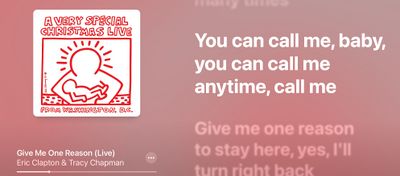 Clapton/Chapman Give me one reason.
Clapton/Chapman Give me one reason.
courriel privé
Christophe aka xtof utilise le domaine `ducamp.me` pour ses usages personnels ET professionnels.
- la boîte de réception d’e-mail sur le sous-domaine `Ducamp.me` est redirigée sur FastMail (Nelle Zélande) - j'envisage de tester ProtonMail pour chiffrement des communications
Disposer d'un compte e-mail privé
(source Derek Sievers - https://sivers.org/pe - 2019-09-28)
J'aimais internet. Je pensais que c'était cool, créatif, sauvage, indomptable, expressif, décentralisé et éducatif. Je suppose que ce l'était, à l'époque, mais maintenant ? Je me mets à détester pratiquement tout ce qui existe.
Je n'aime pas non plus les médias sociaux. Photos mises en scène de personnes essayant d'obtenir une réaction pour un shoot de dopamine. Bruit, battage médiatique et drame. Cela me donne envie d'éviter complètement Internet.
Puis, j'ai réfléchi à ce que j'aime.
Ma boîte de courriels est vraiment sympa. Uniquement des personnes que j’aime, à qui j'ai donné mon e-mail privé.
Je recommande vivement de configurer une adresse e-mail privée.
Utilisez FastMail, ProtonMail, Posteo ou tout autre service où vous payez réellement entre 1 et 3 euros par mois et où vous obtiendrez en retour une expérience merveilleuse de messagerie totalement dépourvue de spam et sans publicité.
Ensuite, ne donnez jamais à qui que ce soit votre nouvelle adresse privée de courrier électronique, exception faite de vos amis et votre famille.
Conservez votre ancien compte Gmail pour récupérer le courrier indésirable. Les personnes qui comptent vraiment pour vous utiliseront votre nouvelle adresse e-mail, vous n'aurez donc plus besoin de vérifier l'ancien.
Il est agréable de recevoir une notification qui signifie encore quelque chose : ne recevoir qu’un ou deux courriels par jour et savoir qu’ils sont vraiment pour vous. Ou bien, si vous ne recevez aucune notification, rien n'était vraiment important - alors inutile de vérifier.
La plupart des jours, je ne regarde ni le web ni les applications. Je viens d'écrire, d'envoyer des SMS à des amis, d'appeler des amis et de consulter mes e-mails. Ça me suffit.
SMS ou iMessage
Beaucoup de 🐛s à résoudre depuis ma migration (nov 2019) sur l’opérateur Free : SMS non reçus, non distribués. ???
Et comme bon nombre de mes amis de la génération « OK boomer », je suis peu à l'aise pour taper au clavier comme les ados avec deux pouces . Pour aller plus vite et utiliser tous mes doigts sur un clavier AZERTY, j'ai l'habitude d’« envoyer / recevoir quelques messages par SMS à partir d’une tablette iPad jumelée avec un clavier Bluetooth Logitech[1].
Pensée design
- Pensée design Art de la Conversation et Communication Non Violente. 📚 "Les mots sont des fenêtres..."
Voir aussi
- les protocoles de communication de mon mentor indieweb > http://tantek.pbworks.com/w/page/19402879/CommunicationProtocols
- pour la famille avec Véro (Page à nommer « PDCV ? : No MMS, No DropBox.)
- ↑ Astuce pour retour chariot : « Alt + return »
